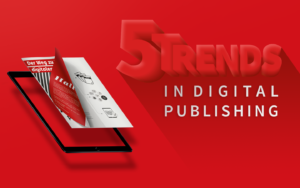Offer your customers added value – and digitalize your processes.
Author: Serdal Kutun
In addition to the individual sales of issues, the number of subscriptions is still an important indicator for the success of a print publication. Although the contingent of e-papers sold is growing both in the area of subscriptions and of individual sales, it cannot (yet) stop the overall downward trend.
Subscription, yes, but with a difference
How can publischers counter the trend? Online offers and magazine apps are useful additions to any publication. But the common strategy of monetization through paywalls is only gaining hesitant acceptance – for many readers the buck still stops here, and they proceed to read elsewhere for free. And to offer an e-paper simply because it’s the done thing today doesn’t seem to be the solution either. Publishers need high-quality products that offer the reader genuine added value and ideally open up numerous upselling opportunities for the media maker.
By publishing your magazine in a native app, you strengthen the classic print business through various digital options: You can, for example, enrich your content with videos or other multimedia formats, integrate additional services such as Google Maps or social sharing, and you can also reach your target group between two editions. Offer the option to purchase individual digital articles or special issues and thereby reach new target groups. Offer your customers flat-combi-subscriptions with which they can use the entire digital content, including for instance full-text archive search. Make sure to communicate such additional benefits clearly to your potential customers. – Because users are increasingly using digital media for their information needs and their approach is more topic-specific.
Automate processes and implement digital business models
These are all approaches that most content providers have thought about more than once. Practice shows, however, that the devil is in the implementation. Only when the majority of publishing processes – from the creation and distribution of content to the billing of individual articles – are amenable to automatisation can the publisher experiment and find the best individual solution for his target group. This requires more than just good ideas – only a digital publishing system can help here. Let’s discuss what the following points mean for you in practice and what solutions are conceivable:
- Classic print models have very little development potential.
- E-papers are a good complement, but hardly compensate for declines in sales.
- Obvious digital added value for customers makes the offer more attractive.
- The more detailed and flexible the business models, the more important automated processes are.
- Upselling opportunities are critical to generating additional sales.
- Reaching new and established target groups via digital channels.
- Recycling content, distributing it in a more targeted manner, and ensuring that newly acquired knowledge on customer needs continuously reinforms distribution strategy (content marketing cycle).
What about your own situation?
Since every publication is different and every target group has different needs, there is no universal solution for digital publishing. We’d love to hear your thoughts on the subject. In our small survey, we want to know what impact digital change is having on you as a publisher. Join in! – We’ll be reporting on the results in our next blog post.
Further comments very welcome. We would be happy to discuss your individual requirements and develop digital solutions with you.

Serdal Kutun
Head of Sales

